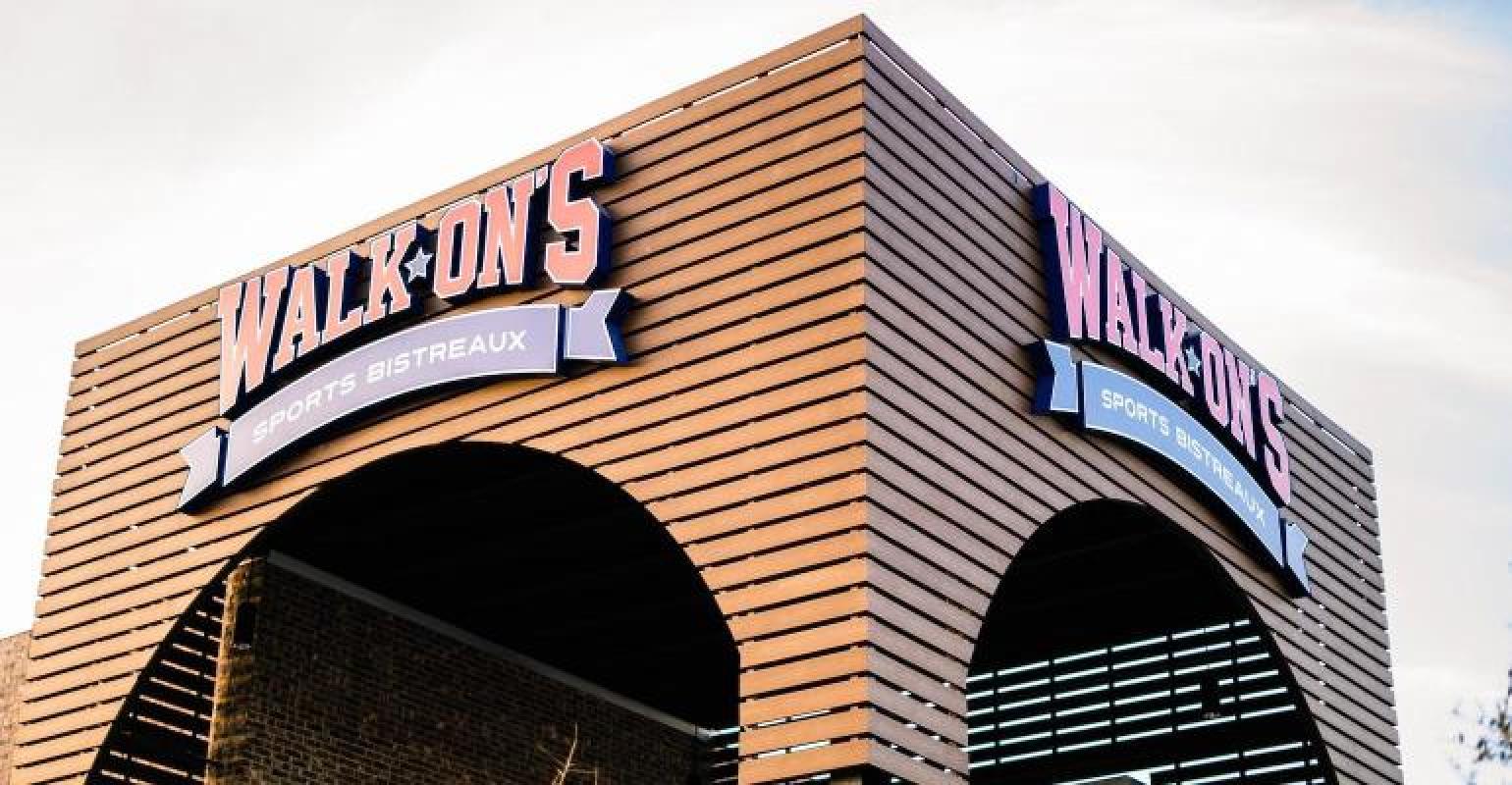Walk-On’s Sports Bistreaux is developing a smaller prototype

October 28, 2024
Walk-On’s plans to open the first smaller prototype this fall in response to higher costs and development challenges.
Alicia Kelso | Jul 03, 2024
Walk-On’s Sports Bistreaux has been on a steady, if not impressive, growth spurt since 2019, when it had just 33 locations. It finished 2023 with 80 units, a nearly 10% uptick from 2022.Sales have followed suit and in 2023, the company was up 12% year-over-year to $336 million, according to Technomic data. Riding this momentum, Walk-On’s is targeting an eventual 300 locations (at least) and it plans to get there by throwing a smaller and more cost-effective prototype into its real estate portfolio mix. The Atlanta-based company is currently whiteboarding just how to do that and chief development officer Jennifer Striepling would ideally like to have the first new prototype open sometime this fall.
“That is ambitious but that is my goal. It has to be checking a lot of boxes, but we want to get started sooner than later to help our existing and prospective franchisees,” she said during a recent interview. “If it works the way we think it can work, we anticipate leaning into (the smaller prototype) more.”
Traditional Walk-On’s range anywhere from 8,000-ish to 10,000-ish square feet. Its new restaurant prototype will range between 5,500 and 6,700 square feet. The company has been methodical in creating the prototype, considering the high cost and availability of trade workers, longer lead times for things like permitting, and existing labor pressures. Such challenges have driven a trend of smaller prototypes across all segments, so Walk-On’s is hardly alone here, but the brand is laser focused on making sure none of its DNA is compromised with a smaller box.
“We have very large buildings with very large kitchens because of our (scratch-made) component. A lot of effort and care goes into our dishes and that takes space and labor,” Striepling said.
To inform the new design, she began meeting with franchisees last year to best understand what they would do differently if they could build or retrofit a restaurant.
“The common denominator was it’s a big monster to run,” Striepling said. This theme gave her and her team license to explore the smaller prototype.
“Our priority is to find the obstacles with the PnL and it all goes back to the building. The most important thing is having team members who want to be there and create an amazing guest experience. No one is coming to any restaurant for the design,” she said.
The focus now is ensuring no space changes are compromising the scratch-made model or the staff’s experience. The company has been busy doing time and motion studies – taping out areas on the kitchen floor, even – and exploring tech and equipment solutions that could reduce ticket time. It’s even looking at TV placement and acoustics to make sure the smaller space remains family friendly. Striepling said there are opportunities to “trim the fat” in both the front and back of house.
“It has to be that way. We can’t have a huge dining room and a small kitchen, otherwise the kitchen will fail, and we won’t have guests coming in the door because they won’t wait two hours for the food,” she said. “We don’t want to tip the scales in any way where it hurts the guest or the team member.”
Of course, the franchisees are also top of mind, which is why they’ve been pulled in to help inform the design. The ultimate goal is to help their balance sheets, but that’s not to say this change will be easy.
“This will be different than what our franchisees have been used to for 20-plus years and we have to make sure we’re communicating to them and to our guests that a smaller box doesn’t mean a smaller menu or a different experience,” Striepling said. “We’re looking at everything, but we won’t depart from the DNA that has made us who we are. Not a lot of brands can say they’re doing things the same way they did 20 years ago. We have been able to bottle up and repeat our magic 80 times and we don’t want to change that. At the same time, there are new cost challenges to consider.”
Though Striepling is anxious to get the first new prototype open, she anticipates the development from there to be intentional. A smaller restaurant might not work in markets with much higher volumes, for instance, and the company is heavily relying on demographic data to understand how to proceed. Once the company does proceed, whether by Striepling’s ideal timeline of this fall or later, she anticipates continued refinement and, eventually, acceleration.
“Now more than ever, guests are picky, which means we need to up our game and continue delivering amazing food and experiences. That’s why we’re relying on our franchisees and team members to make sure we get this right – this level of innovation on equipment, layout, everything,” she said. “I’m excited for the opportunity to evolve and take this brand and culture to another level.”
Share
Copyright © 2022 10 Point Capital | Atlanta, GA 30305
Disclosures Privacy Policy Terms of Use
Copyright © 2022 10 Point Capital
Atlanta, GA 30305
Disclosures
Privacy Policy
Terms of Use
Web Design by Studio Foray